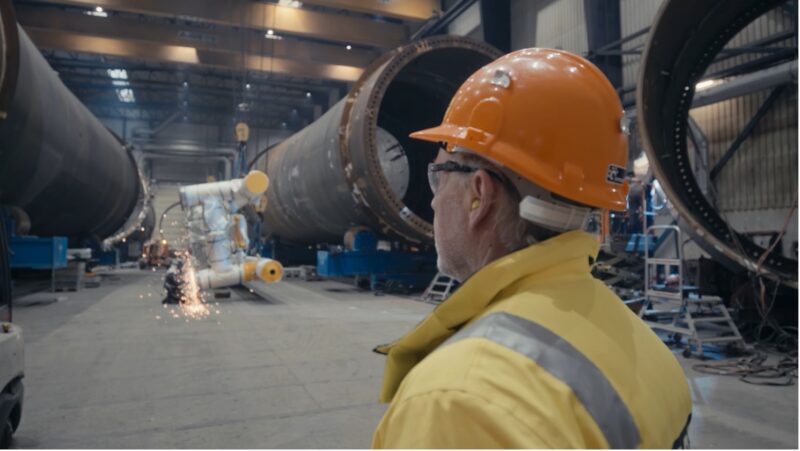As a founding member of the SteelZero initiative, Ørsted has called for increased ambition from governments and businesses to decarbonise the steel sector.
The global green energy major is specifically focused on lowering the emissions of the steel supply chain to future-proof its company and drive progress towards long-term climate goals.
“At Ørsted, we’ve been on a transformation journey for over a decade. While we have made industry-leading progress in reducing emissions in our energy generation and operations, we’re now at our next frontier of decarbonisation: the supply chain. At the centre of our efforts is steel, which makes up around half of the total climate footprint of our offshore wind farm projects,” says Maria Virginia Dundas, Head of Strategic Environment Programmes at Ørsted.
“Steel is an especially hard to decarbonise sector, and it’s a key part of the supply chain for many companies, so it’s a challenge that no single company can overcome on its own. It needs transformative action with suppliers, partners, and peers across industries,” she adds.
In late May, Ørsted teamed up with Climate Group to host the inaugural SteelZero summit and launched the coalition’s global policy principles paper, which outlines a series of recommendations for governments to accelerate the transition to green steel.
“There is no agreed upon definition for decarbonised steel, so as demand increases, it will be key to develop global alignment on what qualifies as low-emissions steel. This will avoid confusion in the sector and allow for collective progress on decarbonising the industry,” Dundas explains. “This is a policy area that requires immediate attention, and something that SteelZero and its partners are working to create.”
A pathway to net-zero steel
Steel production is carbon-intensive. The process requires the separation of oxygen from iron ore and the addition of carbon by melting iron ore at high temperatures in the presence of oxygen and coke, a type of coal. In the absence of commercially-scaled technologies to produce net-zero steel, Ørsted and SteelZero see international cooperation as key to the transition.
The SteelZero initiative aims to drive demand for low-emissions steel, and the initiative’s 23 members – including Ørsted, Siemens Gamesa, Maersk and Volvo – have publicly committed to procuring, specifying, or stocking 100% net-zero steel by mid-century, with interim commitments for 2030.
Ørsted has created its own roadmap to net-zero steel.
Ørsted is working closely with its suppliers on decarbonisation and is encouraging suppliers to decrease the amount of coke used as a reducing agent and replace it with biomass or gas, which together with other incremental efficiencies could significantly lower emissions.
In the more medium term, the company is seeking to integrate circular approaches, which could play a major role in further driving down emissions.
Ultimately, Ørsted’s goal is to achieve net-zero steel by scaling renewable hydrogen in steel production.
“To reach our science-based net-zero target, we must reach net-zero in our supply chains. This is true for all renewable energy companies, and we have a responsibility as an industry to ensure that the build-out of green energy is sustainable and increasingly based on decarbonised steel,” says Dundas.
“The value and potential of SteelZero is two-fold. It sends strong demand signals for green steel and pushes for the enabling policies and investment frameworks that can help unlock a future of net-zero steel.”
This post was sponsored by Orsted. See our editorial guidelines for what this means.
